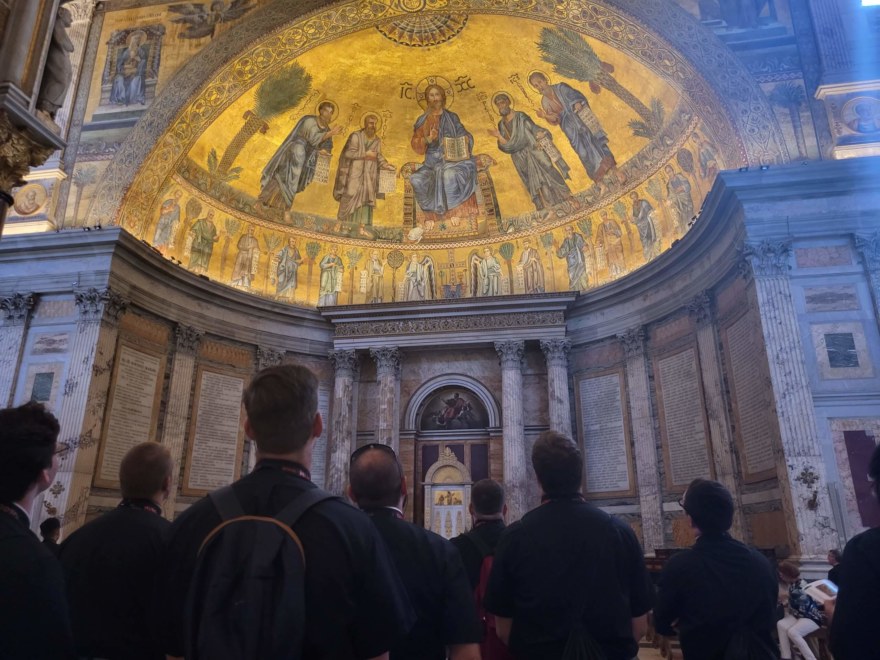An Act of Faith | Reflections from Rome 2023
Rome. The Eternal City. The burial place of Peter and Paul and countless saints. The city with its soil soaked with the blood of Christian martyrs. The city that has over 900 churches and welcomes millions of pilgrims and tourists annually. This is where we, seminarians on The Rome Experience, are privileged to visit for four weeks to be close to the Pope, the Vicar of Christ and the Successor of Peter, and the saints.
After two weeks of visiting churches, basilicas, baptistries, crypts, catacombs, and remains of ancient churches with the help of tour guides, and taking an introductory class on the sacred architecture and art of Rome, I have reached a point where I need to “slow down.” Each of these sacred spaces has every square inch intentionally decorated with art in stone, marble, bronze, fresco, mosaic, and canvas. It is an overwhelming stimulation of the visual senses, especially when you have the knowledge that allows for historical and artistic analysis. It is a wonderful experience, but I have identified a danger of being in these sacred spaces as an analyzer, a tourist even, rather than a faithful encounter-er. This danger moves me to reflect on the importance of praying an Act of Faith and praying to enter the transcendent, namely, communing with God himself.
As part of our weekday horarium, we begin our morning and evening times of mental prayer with the following prayer:
My Lord and my God, I firmly believe that you are here, that you see me, that you hear me. I adore you with profound reverence; I beg your pardon for my sins and the grace to make this time of prayer fruitful. My Immaculate Mother, Saint Joseph my father and lord, my guardian angel, intercede for me.
As this prayer exemplifies, the first step is to become aware of God’s love for us and his presence with and in us (“My Lord and my God, I firmly believe that you are here…”). God’s presence never leaves us; rather, we forget about him. Regularly praying an Act of Faith helps us remain aware of his love, presence, grace, and action. It helps us go about our day as encounter-ers, and commune-ers, rather than distracted and disconnected busybodies. In the same way, when visiting a beautiful, awe-inspiring, overwhelming sacred space, we should begin by reminding ourselves of God’s love and presence, for that is greater than the physical beauty and architectural wonder we are seeing. It is that which our being longs for most, and it is that to which the space honors and intends to help us approach.
All beauty, architectural or artistic, is meant to point to the transcendent (i.e., God); by pointing to it, it is intended to help us get closer to it. And so, if we do not step toward the transcendent, we are simply left with architecture and art. We are left as analyzers and admirers, not encounter-ers and commune-ers with God. What sadness. In this case, the sacred spaces become museums, justifying an admission fee.
“I beg…the grace to make this time of prayer fruitful.” If an encounter moves us, we naturally respond somehow. Involuntarily, we get goosebumps, are brought to tears, are filled with joy, are brought to profound silence, are made to be still, are forced to ponder difficult questions about life, etc. Voluntarily, we act in some way inspired by what we have seen. Our responses are usually involuntary and voluntary. Yet, I would argue that the intended response is more; it is deep prayer.
If we begin with an Act of Faith, then step into a beautiful sacred space, I suggest our next step be to focus on the one place we feel drawn to the most (similar to praying Lectio Divina) and remain there. After meditating on the particular image, with eyes closed, we should ask the Lord and allow him to take us wherever he wants to go so that he might speak to our hearts as he desires (i.e., contemplative prayer). Only then has a sacred space helped us enter into prayer, the transcendent, God’s loving presence.
Let us pray the Act of Faith often so that the whole of our lives (including the special moments of visiting beautiful sacred spaces in Rome and around the world) be encounters with the living God, who has made us for himself and leaves us restless until we rest in him in the eternal transcendence of the Beatific Vision.
Jonathan Sanchez
Archdiocese of Miami


